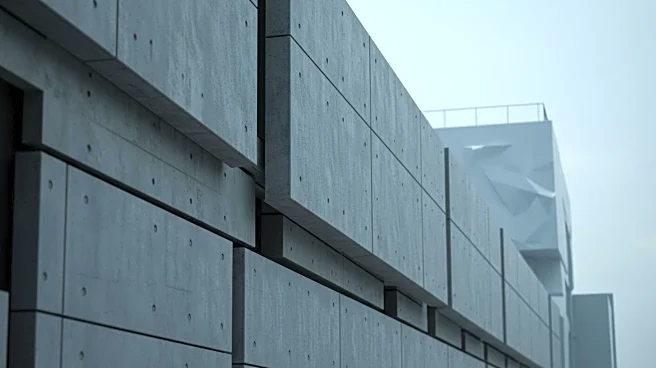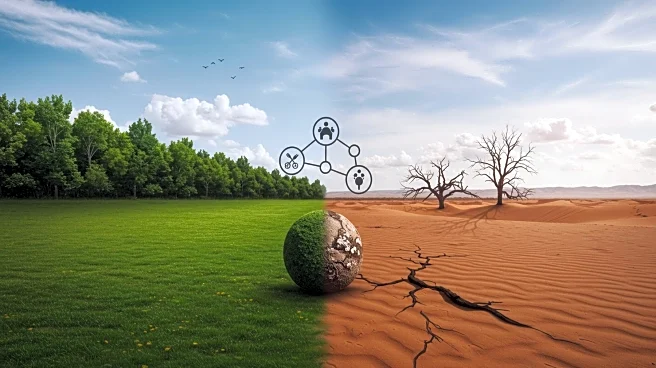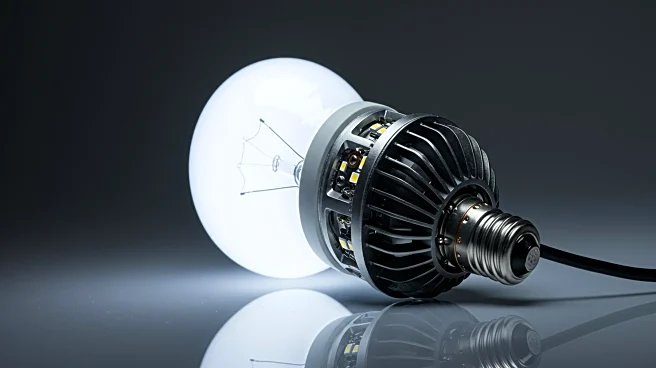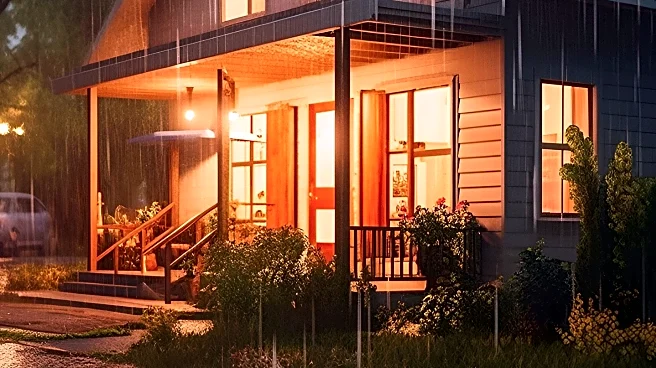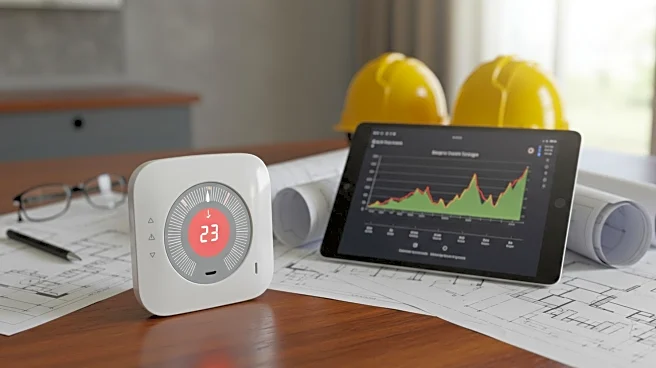What's Happening?
Researchers at Purdue University have developed a new type of cement that reflects and emits heat more effectively than traditional Portland cement. This innovative material can help buildings stay cooler without relying on air conditioning. The cement incorporates tiny reflective crystals of ettringite, which collect on the surface and emit infrared light, reducing heat storage. The production process is scalable and cost-effective, making the cement $5 per tonne cheaper than regular cement. Tests showed that the cement's surface temperature was significantly lower than that of Portland cement, indicating its potential to improve building energy efficiency.
Why It's Important?
The development of super-cool cement offers a sustainable solution to reduce energy consumption in buildings, particularly in hot climates. By minimizing the need for air conditioning, this material can lower electricity usage and greenhouse gas emissions, contributing to environmental conservation. The cost-effectiveness of the cement makes it accessible for widespread use, potentially transforming building construction and design. This innovation aligns with global efforts to enhance energy efficiency and reduce the carbon footprint of the built environment, supporting climate change mitigation strategies.
Beyond the Headlines
While the cement shows promise in reducing building heat, further testing is needed to assess its real-world performance. The material's impact on air temperature and overall building energy efficiency requires comprehensive evaluation. The development also raises questions about the integration of such materials into existing construction practices and regulatory frameworks. As the construction industry seeks sustainable solutions, innovations like super-cool cement could drive long-term shifts in building design and energy management.
